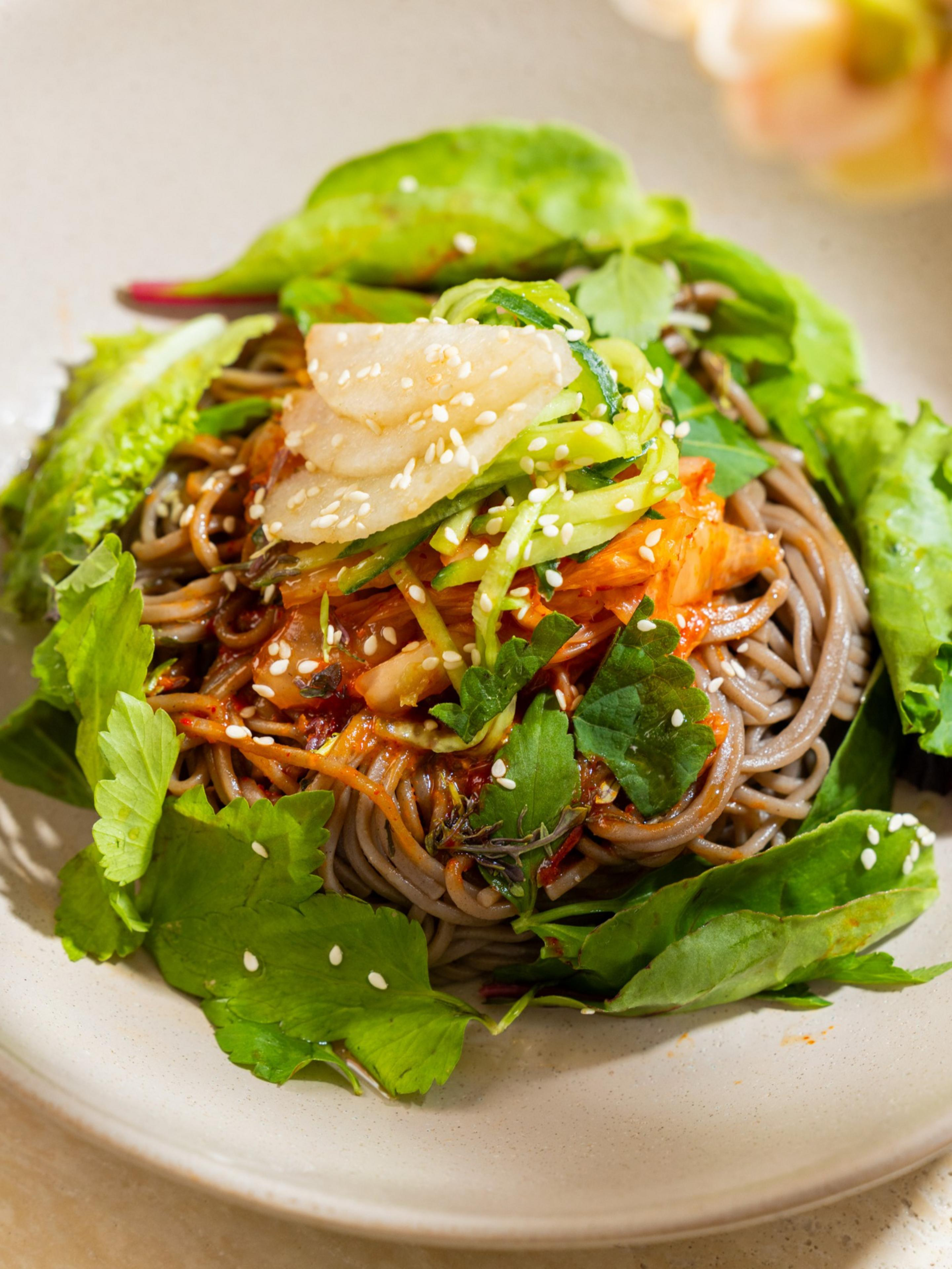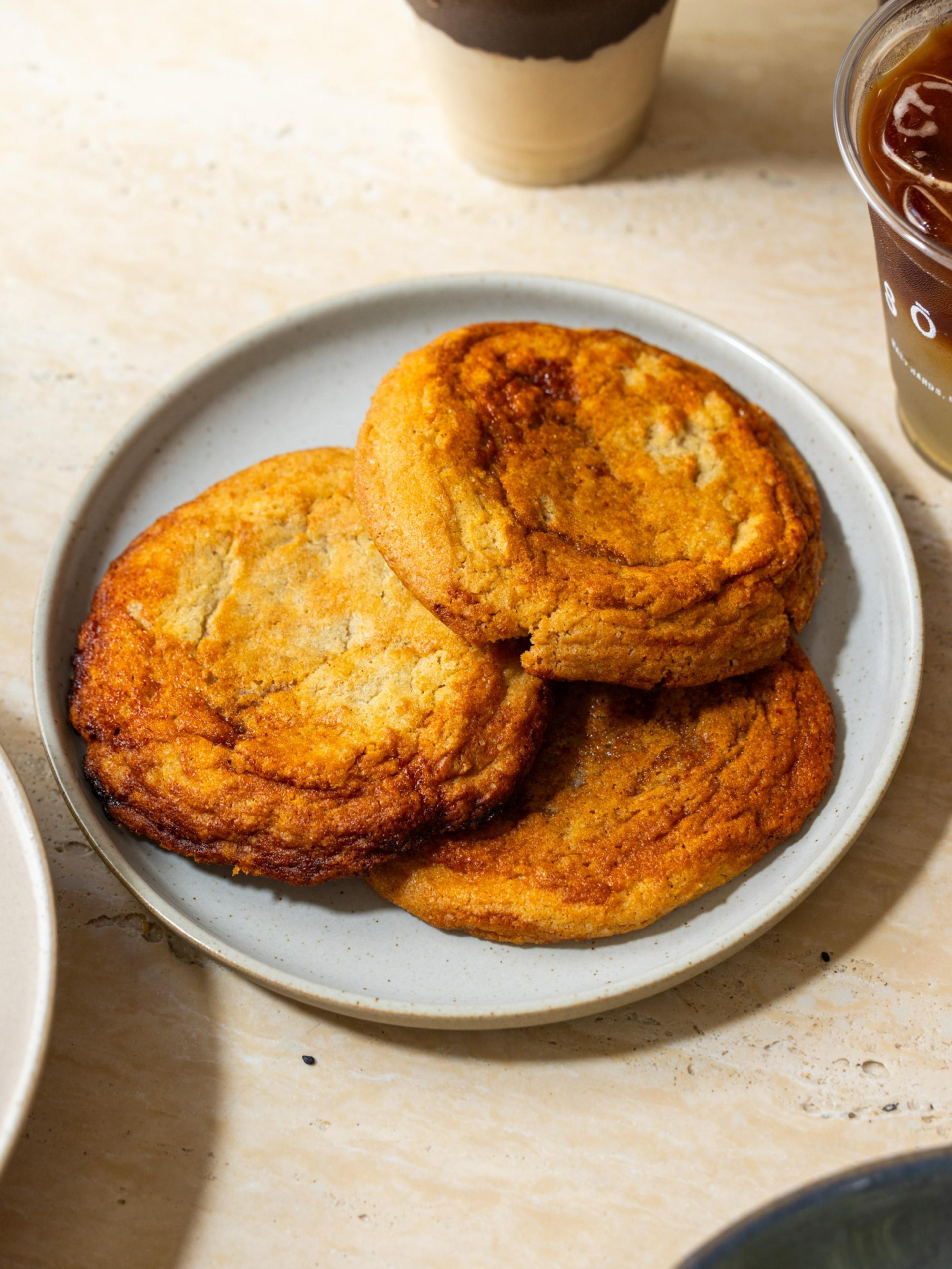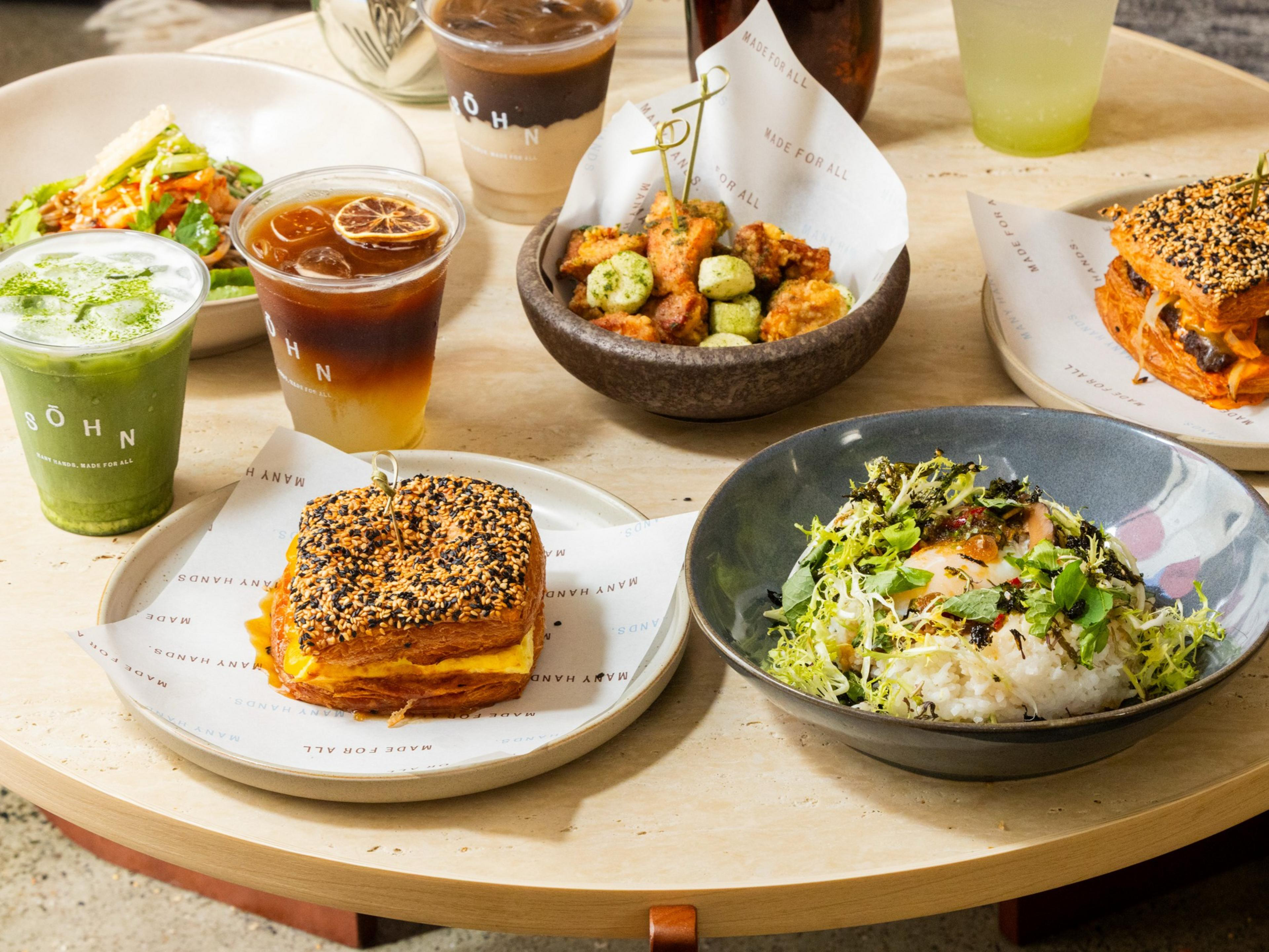Eat Here Now is a first look at some of the newest, hottest restaurants around – the ones we think are worth visiting. We dine once, serve forth our thoughts, and let you take it from there.
Every five minutes on a warm Thursday afternoon, Janet Lee pops her head out the front door of Sohn (opens in new tab) to peek down the sidewalk. As a managing partner of the city’s buzziest new Korean cafe, she can’t help herself. Even though it’s a slower day — meaning there’s only a 20-minute wait — she debates whether to bring ice water and snacks to the dozen or so people in line.
Since opening in August, the 8,000-square-foot venue — with two floors of tables, high-tops, cozy lounge areas, and bar seating — has struggled to keep up with the surge of fashionable Gen Zers and millennials who’ve been flocking to the Dogpatch. Lee says few have complained about the wait as they inch closer to stepping inside, where they order banana oat milk lattes ($7) or the hearty Sohn breakfast sandwich ($14), with gyeran jjim (a fluffy Korean-style steamed egg), sweet onion bacon jam, and melty cheese on a buttery, sesame-flecked croissant bun from nearby Neighbor Bakehouse. Mid-bite of a sweet-savory Seoul sausage pepper croissant ($6.75) made with chicken sausage and spicy Korean marinade, a pair of friends exit the garage doors and mutter, “Oh, my God, so good.”
The overwhelmingly positive reception has surprised Lee and her cofounder, chef Deuki Hong, who were stunned by the 200-person line on opening day. “Honestly, going into our grand opening, we didn’t anticipate a line at all,” Lee says. “We thought we were just going to open the doors, have a cashier, and have people grab a number like a normal cafe. We realized we can’t do that to have the kind of experience we’re trying to create.”
A decidedly Korean American menu
Sohn, which means “hand” in Korean, offers a decidedly Korean American experience — which is to say, it is not a facsimile of the third-wave coffee and cafes you’ll find in Seoul. Hong and Lee wanted to create a mixed-use space that reflects the energy and community they’ve experienced in other U.S. cities where they’ve lived and worked.


“Growing up in San Francisco, Koreans have just felt hidden here,” Lee says. “There was never this kind of gathering place for Koreans like I’ve seen that exists in Los Angeles or New York. We just want to be part of the movement to help the Bay Area create its own kind of Korean American culture.”
Both Hong and Lee are adamant that Sohn is not a restaurant. In fact, they like to think of it as just about everything but — cafe, event space, retail shop, and creative workspace. Still, they’ve taken care to ensure the menu reflects a Korean American sensibility. “A lot of what’s on our menu are flavors we grew up with,” Hong explains. “I grew up in Jersey, so I grew up American. Nostalgic food to me is burgers and hot dogs just as much as it is Korean food, so there’s going to be a blend of sorts, no matter what.”

Dishes like the spicy cold noodle salad ($13) lean into traditional Korean ingredients commonly found in summer. Chilled, bouncy buckwheat noodles are doused in a gochujang-based sauce and topped with a crown of bright, peppery perilla leaves, minari (sometimes called water celery), and mixed greens. It’s the kind of light and refreshing lunch San Franciscans crave on shockingly hot fall days. The galbi patty melt ($16) attempts to put a Korean spin on a Bay Area classic but skews more American. While impressive in its heft, the patty lacks the sweetness or smokiness of typical Korean barbecue, and though the kimchi slaw adds a welcome crunch, it’s missing the kind of heat or tanginess you’d expect.
Meanwhile, the beverages shine. You wouldn’t find drinks like the Melona matcha latte ($7) in Korea; Lee explains it would be like having a Hershey’s Kisses mocha on the menu in the U.S. — a little too on the nose. But to Korean kids who grew up in the States, the subtle honeydew flavor is nostalgic, like a grown-up version of the Melona ice pops many grew up eating.
‘A kind of love letter to our culture’
Admittedly, they’ve had some growing pains. But a month in, they’ve made adjustments based on feedback. They’ve added more tables inside, created a dedicated takeout line, and pivoted to a QR code system to speed up ordering.

In the coming months, they’ll swap items to feature seasonal specials, but it’s not likely the menu will grow larger. (Don’t worry, the breakfast sandwich is here to stay.) In addition to the Korean Americans he has already tapped — New York Times food writer Eric Kim happily gave his blessing for the cafe to use his recipe for his cult-favorite gochujang caramel cookie (opens in new tab) — Hong is teasing collaborations with other chefs and artists for pop-ups and events in the space. It’s an effort to build, as he calls it, a platform and a bridge for Korean Americans to showcase their talent.
“I’m sick of people saying that the Bay Area Korean food or culture sucks, like it doesn’t exist,” Hong says. “I look at Sohn as a kind of love letter to our culture, the Korean culture, but also to the Bay Area. I don’t think we could have built any of this if we weren’t in the Bay.”
